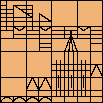Projects
| Project 1: | Philosophy |
| Manager/ Group’s Speaker: | Gottfried Seebaß (FB Philosophie, Universität Konstanz) |
| Agent: | Dr. Michael Schmitz |
| 2006 – 2009 | The experience of acting and the limits of intentional control |
| 2009 – 2012 | The Limits and Background of Common Intentions |
Project Description
In the project joint intentions of small groups were conceptually delimited from basic forms of joint action on the one hand and institutionalized forms of collectivity on the other. To this end, essential reference was made to the different formats of the representations constitutive for joint actions and intentions in the context of a layered account of human intentionality. The lowest layer consists of sensory-motor-emotional schemata that guide basic joint actions like dancing or playing football. The relevant representations are non-conceptual, that is, they are, among other things, gestaltlike, dense, and strongly context-dependent, but language- and intention-independent. The format and the intention-independence of these representations helps to explain limits of the intentional control of action.
Part of the developed conception of joint intention-independent action is an understanding of the actions of others below the level of the ascription of intentions and other mental states. This kind of understanding resists categorization in terms of the traditional dualism of mind and body. When we, for example, see what the other does, we neither perceive a mere body nor pure mental states. In this way, it can be explained how children are able to act cooperatively before they have developed the capacities to ascribe mental states to others. Joint intentions can only be formed and can only function against the background of elementary abilities of this kind. The »we«-subject of these intentions is nothing mysterious, nothing free-floating relative to the group members, but a mode of connectedness between them, which, on the basis of joint skills and emotional attachments, is constituted through shared theoretical and practical positions – beliefs and intentions – with regard to the world. An essential part of the constitution of this »we« and its positions is the once again collective and distributed representation of these through the group members. On this conceptual level we find linguistic representations, in particular those of spoken language, where rules are negotiated that codify the joint action patterns established in group sensory-motor-emotional interactions, and thus represent them in a way that is more context-independent and more accessible to reflection.
The further step towards institutionalization in the narrow sense is essentially connected with written language and other forms of documentation, which enable an even larger degree of context independence, standardization, externalization, and of representational role differentiation. It is also connected with the differentiation of roles or positions in organizations. That organizations can be the subject of intentions and other attitudes can be explained through their members taking up these attitudes in role modes, in which they mutually represent their position within the organization and the positions towards the world that they take up in these roles – which are sometimes different from those that they take up as private persons or in other roles.
The ideas developed in the project owe much to the empirical cooperations with other projects, help in reviewing the empirical literature and inspiring, sometimes controversial discussions with other group members. In turn, these ideas have triggered reflections on the conceptual foundations of the study of intentionality in the group, particularly with regard to the concept of intention-independent action, and the relation between action, intentionality and consciousness, which is not only essential to conceptual level reflection, but also to the sensory-motor-emotional experience of individual and joint action.




